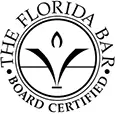What Is the Average Workers’ Compensation Back Injury Settlement?
You have suffered a workplace back injury and filed a workers’ compensation claim. What now? How do you know what is the average workers’ compensation back injury settlement? Will the Washington Department of Labor and Industries (L&I) pay you what they pay everyone else? These are reasonable questions to ask. The state controls every aspect of the worker’s compensation system. It makes sense to have concerns about claim fairness and equity.
If you want to know for sure, you must compare your potential settlement to L&I’s average workers’ compensation settlement for a back injury. Unfortunately, that’s not that easy to do. While you’ll find a lot of data on paid claims, the L&I website provides mostly settlement rates, disability percentages, and disability guidelines.
When you need straight answers about claims procedures, disability requirements, and average settlements, a workers’ compensation lawyer is your best resource. Your attorney will talk with you about your work-related injury, medical expenses, lost wages, and other details of your workers’ compensation claim. They will advocate with the insurance company to ensure you receive maximum compensation.
L&I Injury Data
L&I produces and maintains meticulous online resources. But because they release data in compliance with federal and state privacy laws, you might not have access to all the information you want. Their injury data page provides links to years of statistics and decades of reports.
When you search their files, you’ll find details about types of injuries and body parts, industries involved, injured workers’ occupations, and other information. You’ll also find comprehensive information about state-funded back injury claims paid during the last fiscal year.
Back injuries are the second most frequent workplace injury. With 13,453 accepted claims, only finger and fingernail injuries occur more frequently. Available claim data includes totals paid on closed claims and estimated costs for open claims.
The data from the most recent year is:
- Total accepted back injury claims: 11,358. These include traumatic back and spinal injuries, strains, surface wounds, open wounds, burns, multiple traumas, and other categories.
- Total paid on back injury claims: $115,689,721.
- Average incurred cost per back injury claim: $10,186.
What Settlements Does L&I Pay?
Not every injured worker qualifies for a back injury settlement. There are different possibilities for workers’ compensation benefits. This often depends on the extent of your back injury, whether you are temporarily unable to work, or whether you are facing a permanent disability that prevents you from working again. Your workers’ compensation lawyer may pursue three different types of settlements.
Claim Resolution Structured Settlement Agreements
Washington Administrative Code gives L&I the authority to negotiate a structured settlement agreement with you. Their ideal structured settlement candidate is a 50-year-old worker with an accepted claim lasting 180 days or more.
They suggest that you might also be a candidate if you have:
- An open lost-time claim;
- A supplemental income (Social Security, retirement, etc.);
- A desire to return to work; and
- No interest in retraining.
A structured settlement is a negotiated arrangement that allows you to exchange your current benefits for future lump sum payments. You, your employer, or L&I have the right to initiate the process. If you have a legal representative, you should discuss the benefits and drawbacks before you complete the settlement process.
Once you negotiate the payment terms, you sign a contract that describes all the terms of your agreement. In some cases, when you accept a structured settlement, you give up your right to recover additional medical benefits for your injury.
Permanent Partial Disability Awards
When you’ve reached maximum medical improvement, you may qualify to receive a payment based on any permanent partial disabilities (PPD) you sustained. L&I pays PPD benefits based on your injury, its severity, and a physician-assigned PPD rating.
A physician who wasn’t involved in your treatment usually conducts an independent medical examination and issues a disability rating. Each rating corresponds with a total body impairment percentage. Cervical, lumbar, and dorsal back injuries have separate rating categories.
Under the PPD award system, the independent physician is solely responsible for rating your disability. As these ratings determine how much money you receive, the Washington Administrative Code, WAC §296-20-2010, provides statutory rating guidance for medical care professionals.
L&I chooses the doctor and that doctor’s disability rating controls your PPD payment amount. The potential conflict of interests does little to inspire confidence in the overall process. L&I uses your disability rating and a Disability Category Awards schedule to calculate your PPD settlement. They apply a formula that includes:
- Back injury category (cervical, lumbar, dorsal);
- Category impairment ratings from 2 to 8;
- Brain and back impairment percentages from 10 percent to 75 percent; and
- Whole-body impairment value, currently $214,222.98.
You receive your PPD settlement in monthly installments. You may also qualify to receive a PPD down payment.
Your Right to Protest or Appeal a PPD Decision
If you, your doctor, or your employer disagree with L&I’s PPD findings, you have the right to protest or appeal. You must file your protest or appeal within 60 days of the decision. You may write a protest letter and send it to your L&I claim manager, or you may file an online appeal with the Board of Industrial Insurance Appeals.
An experienced workers comp lawyer is a valuable ally to help navigate the appeals process. They will be familiar with work-related back injuries and how much compensation is appropriate for an average workers comp settlement. You can focus on your medical treatment and your recovery while they negotiate on your behalf.
Pensions
An L&I pension provides a lifetime income when you can’t work due to a permanent total disability. You automatically qualify for a pension if you have one of the following disabilities: loss of use of both arms, both legs, or one arm and one leg, or total vision loss.
When you qualify for a pension, you receive an amount that’s equal to your lost-time benefit. The amount you receive depends on your salary, marital status, average wage when you sustained an on-the-job injury, and other factors.
You must certify your disability annually unless you have a specified disability, and you may receive periodic cost of living adjustments. Depending on the payment option you select, your family may receive survivor’s pension benefits after your death.
Workplace Back Injuries
Several types of on-the-job accidents can result in severe back injuries eligible for a workers’ compensation claim. Some common scenarios include:
- Lifting heavy objects: Straining your back while lifting heavy items, especially without proper lifting techniques or assistance, can lead to back injuries.
- Slip and falls: Falling on a wet or uneven surface, or tripping over objects in the workplace, can cause back injuries such as sprains, strains, or fractures.
- Repetitive motions: Repeatedly performing tasks that involve bending, twisting, or other strenuous movements can gradually wear down the back and lead to injuries like repetitive strain injuries or herniated discs.
- Vehicle accidents: Workers who drive as part of their job may be at risk of back injuries in the event of a motor vehicle accident, such as a collision or sudden impact.
- Workplace violence: Acts of violence or assaults in the workplace can result in traumatic back injuries, such as fractures or spinal cord injuries.
Spinal Cord Injuries
Workers’ compensation typically covers injuries to the spine, including the spinal cord, if they occur during employment. These types of injuries can result from severe trauma, such as falls from heights, vehicle accidents, or other serious workplace incidents. They can have significant long-term effects on mobility, sensation, and overall quality of life.
Workers’ comp benefits are meant to help the injured worker recover and adapt to their new circumstances. Seasoned workers’ compensation attorneys can represent you throughout the workers’ compensation process and settlement negotiations.
How Can a Workers’ Compensation Lawyer Help Me?
First and foremost, a compassionate attorney understands the physical and emotional toll a back injury can take on you. They’ll listen to your concerns with empathy and provide reassurance that they’re there to advocate for your best interests.
During the process, you can expect your attorney to guide you through each step, from filing the initial workers’ compensation claim to navigating disputes or appeals. They’ll handle the paperwork, gather necessary evidence, and effectively present your claim. This can help maximize your chances of receiving fair compensation.
Advocating for Your Financial Future
One of the most significant worries for individuals facing a back injury is the uncertainty surrounding their ability to work and provide for themselves and their loved ones. A skilled attorney will protect your rights and fight for the benefits you deserve. This includes seeking compensation for medical expenses, lost wages, vocational rehabilitation, and other applicable damages. This may include negotiating with insurance companies for a fair settlement or representing you in hearings or trials.
Above all, an experienced workers’ compensation attorney understands the importance of your financial stability and will work diligently to secure the compensation you need to move forward with your life. They’ll provide support, guidance, and peace of mind during this challenging time, allowing you to focus on your recovery without the added stress of navigating the legal process alone.
Contact a Worker’s Compensation Attorney
If you believe you qualify for a worker’s compensation settlement, consult a workers’ compensation attorney before you begin negotiations. Attorneys negotiate with the Department of Labor & Industries on your behalf. If you have already received a low offer, a workers’ compensation attorney can help you through the appeal process. Most attorneys offer a free initial consultation where you can discuss your case and get the help you need.
Free Consultation
We Are Here For You 24/7
Reviews
– Elissa M.
“Really pleased with Boohoff Law! Received immediate responses when I had any questions. Treated amazingly by all staff … made this process a true breeze!”
– Caitlyn M.
– Brandy K.
Related Posts
Lowball Offer for Your Totaled Car? What To Do When Your Car Was Totaled and the Insurance Offer Seems Too Low
Wrecked Without a Buckle: Can I File a Claim if I Wasn’t Wearing a Seatbelt in a Car Accident?
Sidelined by a Sudden Door? Figuring Out Who Is Liable in a Dooring Bicycle Accident
Recovery is personal.
We’re here for you.
We’re close by. And if you can’t make it to us, we’ll meet you where you need us, at home or in the hospital.
You're better off with Boohoff.











The information on this website is for general information purposes only. Nothing on this site should be taken as legal advice for any individual case or situation. This information is not intended to create, and receipt or viewing does not constitute, an attorney-client relationship.
available 24/7
(877) 999-9999
